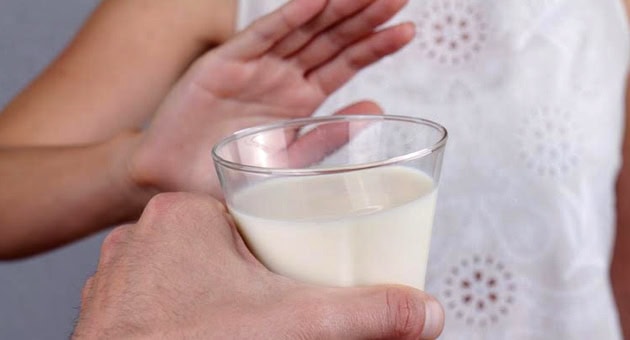
Lactose is a complex sugar found in milk and milk products like cheese, butter, cream and ghee. The human small intestine secretes an enzyme called lactase that breaks lactose in to simple sugars: glucose and galactose which our body then digests and absorbs.
What Is Lactose Intolerance?
When the small intestine does not produce enough of the enzyme lactase, the lactose in the dairy we consume is not synthesised into the simpler sugars and as a result, uncomfortable conditions like gas, bloating and stomach ache occur.
What Causes It?
Experts say that certain genes, changing dietary habits, some serious illness of the intestine or a major surgery are all suspects behind someone being lactose intolerant. The degree of intolerance is the decider of how much dairy, if any, can be had.
What Are The Symptoms?
Symptoms can be mild to severe and usually begin between half an hour to 2 hours of eating any food that is milk based. Symptoms include bloating, lower abdominal cramps, rumbling sounds in the lower belly, flatulence, loose stools and vomiting. Lactose intolerance most commonly runs in families, and symptoms usually develop during the teen or adult years.
What Are The Implications Of Lactose Intolerance
Besides limiting the options on the menu, having no milk or its derivatives throw serious problems like running the risk of a deficiency of calcium, other minerals which can take a serious toll on the bone health. This can increase risk of fractures and osteoporosis.
What Are The Healthy Alternatives To Dairy Products?
-Research about the effect of consuming dairy products by lactose-intolerant people has shown that when consumed with meals, milk and its products are less likely to cause trouble.
-So try milk with cornflakes for a change. Also, denser dairy products like yogurt and the harder varieties of cheese seem to get digested when eaten in small quantities.
-Try lactose-free varieties of milk.
–Soy milk in an alternative that is rich in minerals and proteins.
–Almond milk is also a newer variety that is lactose free but has a high content of calcium.
-Even rice or coconut milk are nice options to try.
– Include at least 75-100 grams of the following food items in your everyday diet to make up for the lack of dairy: leafy green vegetables like spinach, kale, broccoli, beans, tofu (the milk-less paneer), almonds, jaggery (gur), mushrooms,salt-water fish like tuna, salmon and sardines.